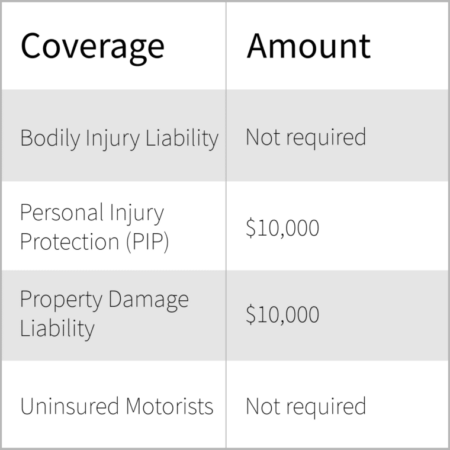
How far back do insurance companies check driving records? It’s a question many drivers ponder, especially those with a less-than-perfect past. Insurance companies, like any business, are looking to assess risk, and your driving history is a big part of that. They want to know if you’re a safe driver or if you’re more likely to file a claim. But how far back do they really go? The answer isn’t always straightforward, and it can depend on several factors.
The scope of a driving record check can vary depending on the state, the type of insurance policy, and your personal driving history. Some companies might look back as far as seven years, while others might only go back three to five years. If you’ve had a particularly bad driving record, like multiple accidents or serious violations, an insurance company might look even further back to get a complete picture of your driving habits.
Driving Record Check Scope
Insurance companies typically look back at your driving record for a specific period of time to assess your risk and determine your insurance rates. The duration of this review can vary depending on several factors, including state regulations, the type of insurance policy you’re seeking, and your driving history.
Factors Influencing Driving Record Check Duration
The time frame for driving record checks can be influenced by several factors. These factors can affect the depth and breadth of the review conducted by insurance companies.
- State Regulations: Each state has its own laws governing how long driving records are kept and how insurance companies can access them. For example, some states require insurance companies to review a driver’s record for the past 3 to 5 years, while others may allow for a longer review period.
- Insurance Policy Type: The type of insurance policy you’re applying for can also affect the duration of the driving record check. For instance, if you’re seeking a high-risk policy, such as commercial trucking insurance, the insurance company may look further back in your driving history to assess your risk profile.
- Driver’s History: If you have a history of traffic violations, accidents, or other driving offenses, insurance companies may look back further in your driving record to get a more complete picture of your driving habits.
Examples of Extended Record Checks
There are situations where insurance companies might conduct a more extensive review of your driving record, looking back beyond the typical timeframe. These situations often involve heightened risk or a need for a thorough assessment.
- High-Risk Drivers: Drivers with a history of serious traffic violations, multiple accidents, or driving under the influence (DUI) convictions might face more extensive record checks. Insurance companies may look back further in their driving history to assess the severity and frequency of past offenses.
- Commercial Insurance: Commercial insurance policies, particularly those for trucking or transportation companies, often require more comprehensive driving record checks. These policies may necessitate a review of the driver’s record for a longer period, potentially going back several years.
- Specialty Insurance: Certain types of insurance, such as high-value vehicle insurance or insurance for drivers with a history of medical conditions, may also involve extended driving record checks. These policies often involve higher premiums and require a more in-depth assessment of the driver’s risk profile.
Types of Information Included: How Far Back Do Insurance Companies Check Driving Records

Insurance companies are like detectives, digging into your driving history to understand your risk behind the wheel. They don’t just look at your recent driving record, they dive deep into the past, gathering information that paints a picture of your driving habits. This information helps them calculate your insurance premiums, ensuring you pay a fair price based on your risk.
Driving Record Data
Insurance companies examine a variety of data points to assess your driving risk. This includes accidents, violations, and your overall driving history. These factors are carefully considered to determine your insurance premium.
- Accidents: Accidents are a major factor in determining insurance premiums. The severity of the accident, the number of accidents you’ve been involved in, and the time frame they occurred in are all taken into account. For example, a recent accident involving a DUI could significantly increase your premium, while a minor fender bender from several years ago might have less impact.
- Violations: Traffic violations like speeding tickets, running red lights, or driving without a license are also considered. The severity of the violation and the number of violations you’ve received can significantly influence your premium. A single speeding ticket might not be a big deal, but a pattern of reckless driving behavior will likely result in higher premiums.
- Driving History: Your overall driving history, including the number of years you’ve been driving, your driving experience, and your driving record, are all considered. For example, a young driver with a clean driving record might pay higher premiums than an older driver with a long history of safe driving.
Impact on Insurance Premiums
Here’s a table that illustrates how different types of driving record data can impact your insurance premiums:
| Type of Driving Record Data | Impact on Insurance Premiums |
|---|---|
| Accidents (minor) | Moderate increase |
| Accidents (serious) | Significant increase |
| Traffic Violations (minor) | Slight increase |
| Traffic Violations (serious) | Moderate to significant increase |
| Clean Driving History | Lower premiums |
| History of Accidents and Violations | Higher premiums |
Impact on Insurance Rates
Your driving record is like your insurance company’s personal diary, and it’s a major factor in how much you pay for car insurance. Think of it like a game of “Who’s Got the Most Points,” except in this case, the more points you have, the more you pay!
Insurance companies use your driving history to determine your risk level. They believe that drivers with clean records are less likely to get into accidents, so they reward them with lower premiums. But if you’ve got a history of violations, your insurance company might think you’re a little more “risky” and charge you more.
Impact of Driving Violations
The impact of different types of driving violations on your insurance costs can vary depending on the severity of the violation, the state you live in, and your insurance company’s specific policies. Here’s a breakdown of how common violations can affect your premium:
- Speeding Tickets: Think of speeding tickets as “minor offenses” in the world of driving records. They can add a few bucks to your premium, but they won’t break the bank. However, multiple speeding tickets can lead to a more significant increase.
- Moving Violations: These are the “middle children” of driving violations. They’re more serious than speeding tickets, and they can lead to bigger premium increases. Examples include running red lights, failing to stop at a stop sign, or driving without a license.
- Accidents: Accidents are the “big guns” of driving violations. They’re the most serious, and they can significantly impact your insurance rates. Even if you weren’t at fault, an accident will likely lead to a premium increase. The higher the cost of the accident, the higher the increase.
- DUI/DWI: This is the “ultimate violation” in the eyes of insurance companies. A DUI/DWI conviction will lead to a massive increase in your insurance rates, and it could even cause your policy to be canceled. This is because insurance companies consider DUI/DWI a serious risk factor.
Scenario: Clean Record vs. Violations, How far back do insurance companies check driving records
Let’s imagine two drivers, both driving the same car. Driver A has a clean record, while Driver B has been caught speeding twice, received a ticket for running a red light, and was involved in an accident (not their fault).
Here’s how their insurance premiums might differ:
- Driver A (Clean Record): Driver A might pay a base premium of $100 per month. Because of their clean record, they might even qualify for a discount, bringing their premium down to $90 per month.
- Driver B (Multiple Violations): Driver B’s insurance company will consider their history of violations. Their premium might start at $150 per month and could increase even further due to the accident, even though it wasn’t their fault. Their final premium could be as high as $200 per month.
As you can see, having a clean driving record can save you a lot of money on your insurance. So, be sure to drive safely and avoid violations to keep your premiums low.
Importance of Accurate Records

Your driving record is a crucial part of your insurance policy, and keeping it accurate can save you a lot of money in the long run. It’s like your insurance company’s way of seeing how good a driver you are. A clean record means lower premiums, while a messy one can lead to higher rates.
Consequences of Errors
If there are errors or discrepancies in your driving record, it can have serious consequences. For example, if you were involved in an accident that you weren’t at fault for, but the information on your record says you were, your insurance rates could go up unfairly. You could end up paying more for coverage because of someone else’s mistake.
Tips for Ensuring Accuracy
To make sure your driving record is accurate, you can take a few steps:
* Review your record regularly: Check your record at least once a year to make sure it reflects your actual driving history.
* Report any errors: If you find any errors, contact the DMV or your insurance company immediately.
* Keep all driving documentation: Keep copies of your driving license, insurance policies, and any accident reports. This documentation can be helpful if you need to dispute any inaccuracies on your record.
* Drive responsibly: The best way to keep your record clean is to drive safely and avoid any traffic violations.
Dispute Resolution

You’ve checked your driving record and found an error or inaccuracy? Don’t panic! It’s more common than you think, and there are ways to get it fixed. This section will walk you through the process of disputing inaccurate information on your driving record, so you can get your insurance rates back on track.
Dispute Process
The process of disputing information on your driving record involves contacting the relevant authorities, providing evidence to support your claim, and following their procedures.
The first step is to identify the source of the error. Is it on your driving record with the DMV or a third-party reporting agency? Once you know the source, you can file a dispute.
Here’s a general Artikel of the process:
- Gather Evidence: Collect any documentation that supports your claim. This could include police reports, court records, insurance documents, or any other relevant information.
- Contact the Reporting Agency: Contact the agency that reported the inaccurate information. This could be the DMV or a third-party reporting agency. They will usually have a dispute process Artikeld on their website.
- File a Dispute: Follow the agency’s instructions for filing a dispute. You’ll need to provide your personal information, the details of the error, and supporting evidence.
- Review and Resolution: The agency will review your dispute and make a decision. If they agree with your claim, they will correct the error on your record. If they deny your claim, you may have the right to appeal their decision.
Examples of Successful Dispute Resolutions
Here are some examples of successful driving record dispute resolutions:
- Incorrect Accident Report: A driver was involved in a minor fender bender, but the police report mistakenly listed them as the at-fault driver. The driver provided a copy of the police report, along with a statement from the other driver confirming the error. The DMV corrected the record after reviewing the evidence.
- Duplicate Ticket: A driver received a speeding ticket, but the ticket was later dismissed in court. However, the DMV’s record still showed the ticket as an active violation. The driver provided a copy of the court dismissal order, and the DMV corrected the record.
Last Point
Understanding how far back insurance companies check driving records is crucial for maintaining accurate and up-to-date records. By understanding the factors that influence the scope of these checks, you can proactively manage your driving history and ensure you’re getting the most accurate and fair insurance rates. If you have any concerns about your driving record, it’s always a good idea to contact your insurance company or a licensed insurance broker for guidance and support.
FAQ
What types of information are included in a driving record check?
Insurance companies typically examine a variety of information, including accidents, traffic violations, and even your driving history. This helps them assess your risk profile and determine your insurance premiums.
How do driving record violations affect insurance rates?
Driving violations can significantly impact your insurance rates. A single violation, like a speeding ticket, can increase your premiums. Multiple violations or more serious offenses, like a DUI, can result in even higher rates or even the denial of coverage.
Can I dispute errors in my driving record?
Yes, you can dispute errors in your driving record. If you believe there’s an inaccuracy, contact the relevant state agency or the DMV. They’ll guide you through the process of challenging the information and correcting any mistakes.




